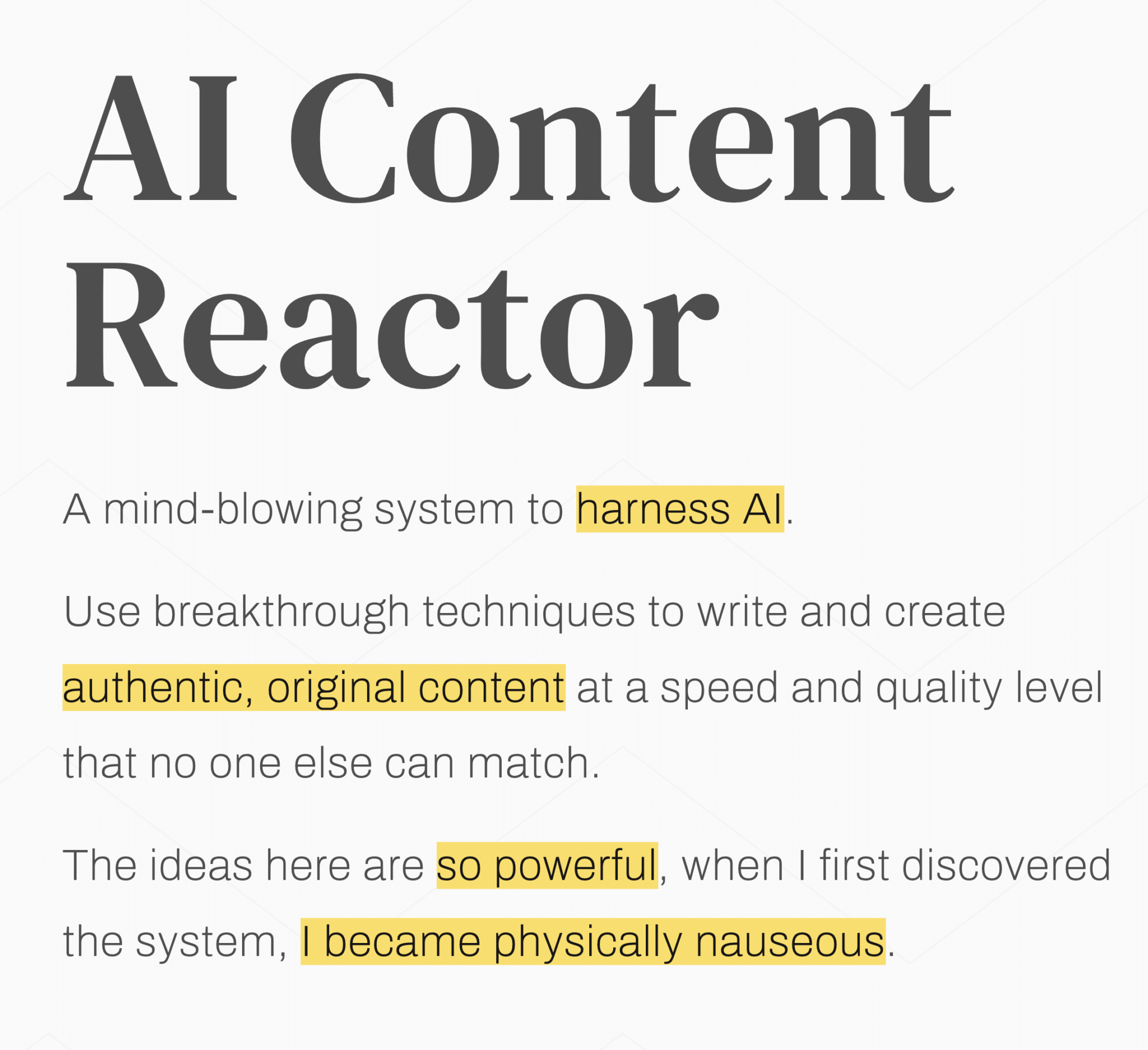Let’s talk people. Today, we’re going to turn your company, your brand, into a person. Is your company annoying? A partier? A stuffed shirt or a laid back bohemian? -And whatever your company sounds like, is that the voice you want?
We’ve been talking a lot lately about content strategies, company culture, marketing plans and converting content. We’ve discussed before about how online marketing is an interlocking mechanism; you can’t take one piece, leave out the rest, and get strong results. Each part – SEO, social media, content, ads – goes into the whole marketing mix. All this is great (even if we do say so ourselves), but doesn’t mean anything if your brand’s company voice has a Fran Dresher laugh, or comes across like Gilbert Gottfried.
What Is a Company Voice?
Your company voice is more than just the words you use – it’s the personality and character that shines through in every piece of communication you put out into the world. Think of it as the distinctive tone, style, and attitude that makes your brand uniquely recognizable, whether someone’s reading your website, scrolling through your social media posts, or receiving your email newsletter.
Just as you can recognize a friend’s voice in a crowded room, your company voice should be instantly identifiable to your audience. It’s the difference between Apple’s sleek, minimalist confidence and Dollar Shave Club’s irreverent humor. It’s what makes Virgin Atlantic sound adventurous while American Airlines maintains a more traditional tone.
But developing the right voice isn’t just about picking a personality out of thin air – it needs to authentically reflect your brand’s values, resonate with your target audience, and remain consistent across all platforms. Whether you’re a startup finding your voice for the first time or an established company looking to refine your tone, understanding the importance of company voice is crucial for modern business success.
Why Should You Worry About a Company Voice?
A few reasons:
- Your company’s voice gives people a more in depth picture of your brand and the people behind the brand (i.e. you and your employees)
- Your company’s voice should be uniquely created; it sets you apart, and is a part of what makes you you.
- Your company’s voice will help influence your market to feel a certain way.
- A consistent use of a specific tone of voice well help build trust.

The Social Landscape
Part of developing your company voice has to do with the written content you put out. However, in today’s connected business world, social media is an equal part of it. In most areas of business, your target market will expect to be able to reach out to you – beyond the email address.
At the end of the day, people buy from people, and not just any people, but people we feel we know. For instance, we’re more willing to buy a product that a friend recommends then a product shown on some ad that pops up. We know our friends, we trust our friends, and we believe what they have to say (one of the reasons why multi-level marketing works so well).
So what’s a business to do? Simply:
Become that friend via the social landscape and a well-thought out, carefully developed company voice.
The Right Company Voice
You have umpteen million possibilities for what your business is going to sound like. For instance, is your business persona informal or formal? A bank might be formal, like Barclays “Fluent in finance” slogan or BNP Pariba, “The bank for a changing world,” or even Edward Jones with “Make sense of investing.”
-But then you also have American Express’ “Don’t leave home without it,” or Capital One’s “What’s in your wallet?” Not quite as formal as Barclays or Edward Jones. Why not? Because the target market is different.
Now, if you’ve already been developing a focused brand identity, developing your company voice is much easier. If you’re just now working on a content strategy and/or marketing strategy, it might be a bit harder. However, no matter what step of marketing you’re in, you’ll still have to ask yourself the same questions:
- What does my company stand for?
- What impression do I want my brand to give?
- What are our philosophies? Nike’s “Just Do It” is a good example here.
- How do we interact with clients, or prospective clients?
- What do my clients get from my company? What’s the real benefit?
Finally, the most important question: WHO is my target market?
Your target market really matters, because they decide whether you’re fluent in financing or know what’s in your wallet. They – and the impression you want to give them – decide whether you should say:
- “What time is it?”
- “Could you tell me what time it is, please?”
- “What’s the time?”
- “Give me the time.”

Once you’ve answered the questions above, you can get to the easy part.
- Evaluate your answers and figure out what’s a natural tone of voice for your company. What voice will reach your audience and fit your company values? For example, it wouldn’t be natural for Timex to have been “a crown for every achievement,” or Rolex to “take a lickin’, but keep on tickin’.” Anyone who wants to beat up on a $1,000 watch like Rolex is insane.
- Aim to be human. Have you ever read a press release? Really read one? They’re generally boring as hell and sound like the corporate robots wrote them. No emotion, no excitement – even if you say you’re excited. “XYZ Company is excited to announce the blah blah blah.”
Your audience, whether B2C or B2B, has a bs-o-meter. You have to be authentic; if you aren’t absolutely professional, for instance, don’t try. Go for the “laid back bohemian.” If it helps, think The Dude from “The Big Lebowski”:
Maude Lebowski: What do you do for recreation?
The Dude: Oh, the usual. I bowl. Drive around. The occasional acid flashback.
- Keep your presence active and consistent. You can’t work to build a community and then, once built, leave it to run on its own. That’s like making friends and then not talking to them for years – those relationships will fade and become jeopardized.
There isn’t a business out there that only wants a customer once. There isn’t a single business that would use a slogan like, “You’ll only use us once,” or “You can’t trust us to stick around, but that’s okay.”
With this in mind, part of every company voice is being active and consistent in social media (or blogging, or any other content development), and consistent in how you get your message across.
A Simple Thing to Keep in Mind
Language: it may be simple, but it’s easy to forget. How does your company speak? Before you start actually communicating with your audience, decide the following:
Formal or informal?
This is more than just whether to use contractions or not. This is actively choosing whether your company is going to be the impeccably dressed, carefully spoken individual, or the reckless partier. For example, are you going to invite your audience to “read more” or “check it out”? Do they “process your order”, “buy now,” or “pay up”?
Technical or layman?
You may have to use technical terminology from time to time, but do you use them all the time and risk alienating your customers due to unknown terms? Or, do you use simple language to be understood, and risk them feeling like you’re talking down to them? Risk is on either side, but you still have to decide which side your risk is on.
Slang or precise language?
Should you use only terms in Webster’s Dictionary or utilize terminology from the Urban Dictionary? Did you give someone your “bini card” or your “business card”? Are you “in it to win it” or are you “working to become successful”? Do you invite someone to “check out my new digs” or “come see my new office”?
The language you choose to use for your company’s voice, formal, technical, precise, etc. will help your target market decide whether you’re “one of them” or an imposter.
Conclusion
If you’re wondering whether all this setup is really important and worth it, remember this: people are already making their mind up about you. It’s like going to barbeque and seeing someone you’ve never met before. By the time you walk up and say “hello” to them, you’ve already come to some conclusions. Sometimes those conclusions are wrong – “she’s snobby,” or “oh, he looks like he’s got a few screws loose,” – but most of the time, first impressions stick.
The more time and thought you put into careful development of your company voice, brand, culture, content and so on, the better chance you’ll have of potential clients creating the exact impression you want. Don’t waste this opportunity!



































